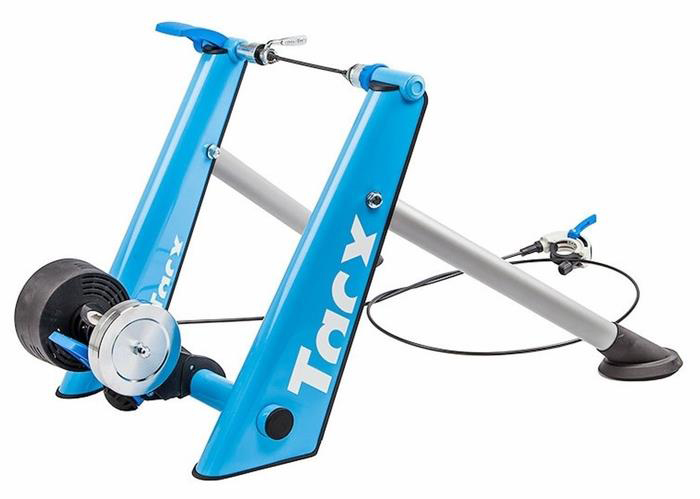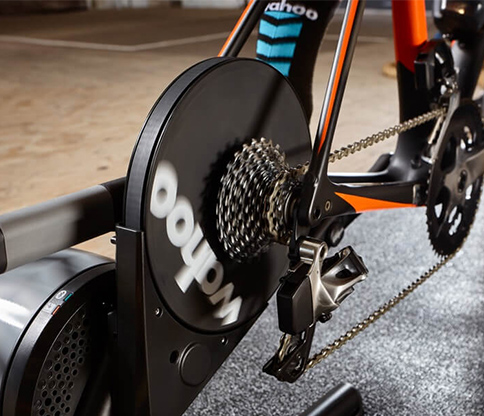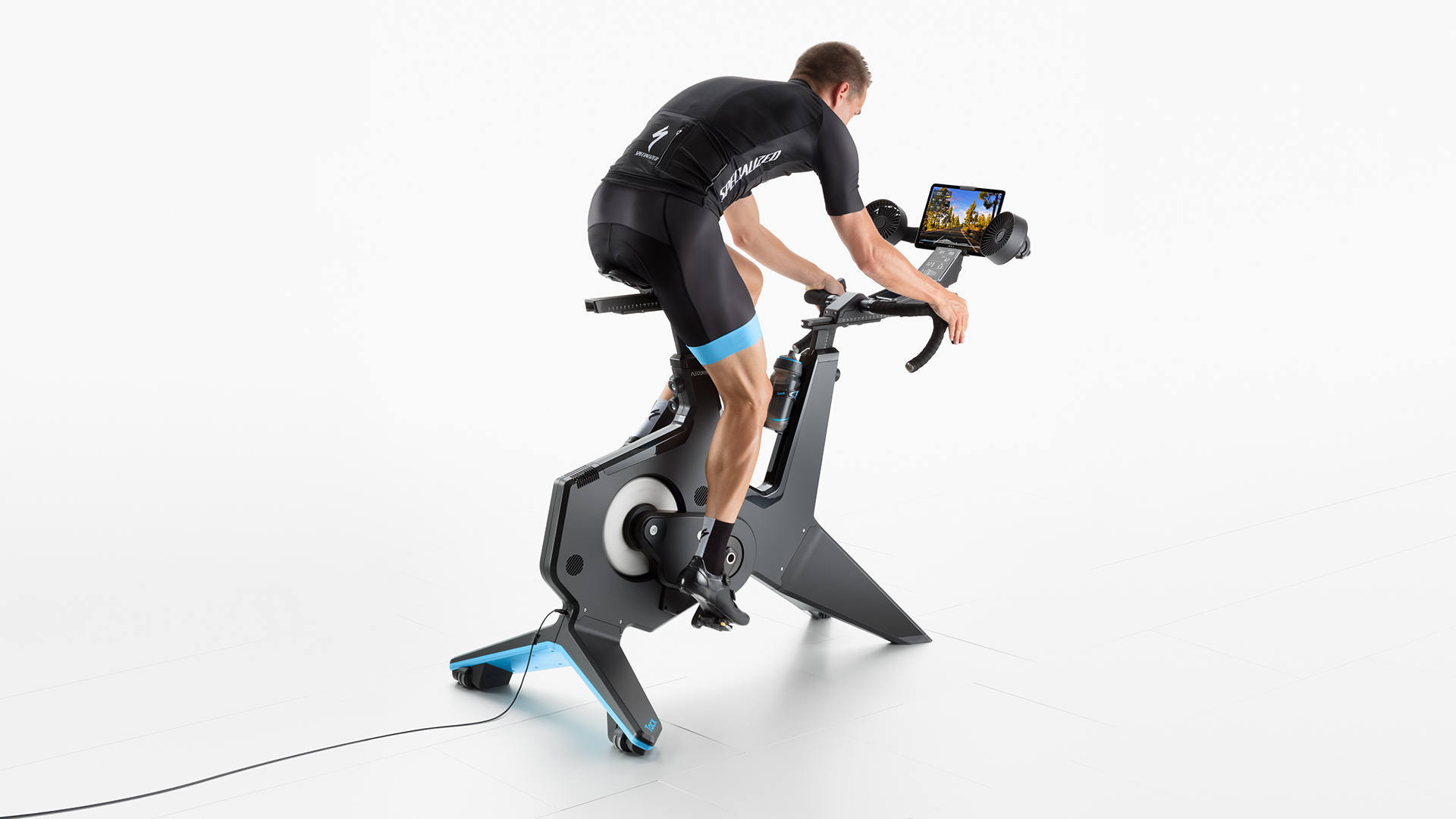-
Interest Free
UP TO 36 MONTHS INTEREST FREE FINANCE

Hamish Roake - Evo Hamilton Crew Leader | Wed 10th Feb 2021 10:04
When the weather starts to get a bit rough getting a cycle trainer can re-define your training and save you from constantly cleaning your bike. With many options out there, finding the right trainer for you can be a mission.
So the weather is starting to get a bit colder and the days a little shorter. Fingertips are starting to ache on those early morning training rides. It rained on you yesterday. You’ve been considering training options that don’t involve six layers of clothing and 3 different lights. You start looking online at indoor training options, but where do we start? Consider this a guide to help you sift through the myriad of options to find a solution that fits both your needs and budget. Let’s begin...
If you’ve ever been to a track meet you will have seen athletes parked in the infield warming up or down on these. Rollers are a great way to train for pedal smoothness and bike handling skills. A lot of athletes use rollers for working on cadence drills and core balance skills on their dedicated race bikes.
There are unfortunately a few downsides to rollers that make them a little less than ideal as a full time indoor training solution. As you’re riding your bike on the rollers, they will heat up and prematurely wear the tyres out versus riding on asphalt, meaning you will want to limit the amount of time spent per session or install some trainer tyres. Rollers also have a limit in terms of resistance, so if you’re wanting to do any short, high power intervals, you may find yourself spinning out your biggest gear pretty quickly. Rollers also require some skill to ride, so for the novice rider they may not be the best choice when starting out on the bike.
Shop Roller Trainers

When most people bring up home trainers, this is what they’re talking about. Generally an “A” frame shape that clamps at the rear axle, and has a roller contacting the rear wheel. The roller is connected to a flywheel which creates resistance against the rear wheel. The resistance is usually adjustable, either at the roller, or with a handlebar mounted remote.
The great thing about these trainers is that they are comparatively inexpensive, light, and generally fold down to a small size.
However, there are a few cons with these trainers. If used with a regular bicycle tyre the roller will heat up quite quickly and prematurely wear the tyre. It will also generate a fairly large amount of noise, and if using a treaded tyre, this can be very loud and uncomfortable. Trainer specific tyres are readily available and address these issues, so if you’re looking to use this type of trainer it is recommended that you have a dedicated bike, or at least a dedicated wheel for use on the trainer.
Shop Wheel-on Basic Trainers

The wheel-on smart trainer is very similar to the basic wheel-on trainer in terms of the way the bike attaches, and it has all of the same pros and cons. The difference between the two lies in the ability to alter the resistance at the rear wheel automatically using training software when connected to a third party app.
This technology allows the user to follow specific training programs to the letter as workouts can be designed or downloaded prior to exercise, and the trainer can then alter the resistance as the workout plays through to keep the user on target.
This same technology allows the user to free ride on platforms such as Zwift, where the trainer can simulate hills, drafting, or descents by changing the resistance at the wheel to mirror the situation in game, in real time.
This gamification of the riding experience helps turn the monotonous act of riding a home trainer into a far more interactive and engaging activity, showing much better long term adherence to exercise goals than the analogue alternative.
Shop Wheel-on Smart Trainers


Direct drive trainers are considered the gold standard of bicycle home trainers at this point in time. They replace the rear wheel of your bicycle completely by simulating a rear hub, which is then connected to the flywheel, which gives resistance. Most direct drive trainers will fit both disc brake, thru axle, and all adult wheel sizes. To use the trainer you just need a cassette installed that is the same as your rear wheel and you're good to go.
There are several benefits to using a direct drive trainer over a wheel-on trainer. The first and most obvious one is that they remove the need for a dedicated trainer tyre, thus the extra hassle and wear associated with a rubber on metal connection (no worn out tyres, no punctures). Because the contact between the bike and trainer is the chain on the cassette, there is no slip under high load, as you sometimes get with a rubber tyre on a metal roller. Because this surface interface is eliminated, direct drive trainers are generally a lot quieter, with high end models being almost silent (excluding normal drivetrain noises).
A direct drive trainer will always be able to handle a larger amount of wattage output versus a wheel-on trainer, and be able to show that wattage on screen as most new direct drive trainers have an accurate power meter installed.
While it is a subjective experience, there is a general consensus that direct drive trainers have a much more realistic road feel than any of the other options. This is usually due to the heavier flywheels simulating momentum better. In some cases such as the Tacx Neo, the trainer can even simulate different road surfaces such as gravel and cobbled roads.
All the direct drive trainers Evo sell are smart trainers, and have all the same smart qualities as smart wheel-on trainers listed above.
There are a few downsides to direct drive trainers. They are heavier than wheel-on trainers, which can make them more difficult to transport. If you have multiple bikes with different drive trains that you wish to run on one trainer, you will need to have the tools and knowledge to swap cassettes over as a 10 speed bike will not mesh well with a 12 speed cassette. Lastly, they are more expensive than their counterpoints, although they do offer a lot of value for the price.
Shop Direct Drive Trainers


If you are looking for the best indoor training experience money can buy, then a smart trainer bike is currently the pinnacle of indoor training set ups. This style of trainer is purpose built for immersive training indoors and does away with the need to connect your outdoor bike to a trainer. You no longer need a dedicated indoor training bike or if your indoor training bike doubles as an outdoor bike, you don’t need to worry about taking the rear wheel off or changing axles to train indoors.
Other than just being a complete package, there are a number of benefits to trainer bikes over wheel-on or direct drive trainers. Firstly, they are fully adjustable to the riders needs, meaning more than one person in your household could use the same bike regardless of their physical attributes. Saddle height, reach, saddle to bar drop and even crank length can be customized to you the rider.
Smart trainer bikes also do away with conventional chain & cog drivetrains for generating power. Instead, resistance is managed via a magnetic flywheel. As a result, the ‘virtual gears’ are able to simulate a much wider gear range, provide a virtually silent ride and have the ability to resist very high wattage sprints. On most models, gear ratios can even be custom tuned to match your preference.
At this stage, smart trainer bikes are at the premium end of the indoor trainer spectrum only, and as such you’ll typically find they come with all the bells & whistles that would normally be sold separately when buying a direct drive or wheel-on trainer. Most will come with built in fans, a screen and are designed with immersive experiences in mind such as simulated road feel and simulated climbing and descending.
When it comes to downsides, smart trainer bikes are bulkier so you’ll need plenty of space to store it when not in use. They can take some time to set up like your normal ride, so getting the right fit may take some patience. And finally, the price… At nearly double the price of the top end direct drive trainers, these are a serious piece of training kit!
Shop Smart Trainer Bikes

First things first, unless you are opting for a smart trainer bike, you will need a bicycle. If you’ve made it this far it’s probably safe to assume that we’ve ticked that box. That leads us to choosing a trainer. This choice comes down to budget, and finding the trainer that suits your individual needs. Depending on which trainer you choose, you will generally need to purchase some accessories to get that trainer to work with your bicycle and home setup.
For wheel-on trainers, you will want to purchase a trainer tyre at minimum, or for more dedicated indoor setups, potentially a wheel and cassette also. When purchasing the trainer tyre, make sure it is a good match with your current bike, as there are a few different wheel size options. Also make sure that any wheel you purchase is compatible with the cassette you wish to put on it.
With direct drive trainers, you will need to purchase the appropriate cassette to match the bike you are looking to use on the trainer. Try and make sure that it is the same amount of speeds, same tooth range, and ideally from the same manufacturer as your drivetrain (for optimum shift performance, avoid mixing Shimano/Sram/Campagnolo cassettes and chains).
When it comes to smart trainers, they tend to use a mixture of Bluetooth and ant+ technology to connect to your varied devices. Some options such as latest generation iPads will connect via Bluetooth without any dramas, but for most setups we recommend using an ant+ USB dongle, which is the most reliable way to sync multiple devices to your tv or computer. This will allow you to have both your trainer and heart rate monitor paired up, and still leave the Bluetooth channel free for a keyboard or headphones with no interference.
Trainer mats protect floors from your sweat, and make cleaning your training station a simple case of mopping up around the bike.
Fans are a must have. When we cycle outside, the air is moving past our bodies at speeds consistently over 25 km/ph, so when we’re sitting motionless doing the same effort, we need something to replicate that cool wind, or we’re going to overheat very quickly. Wahoo have an awesome fan that pairs with their kicker system, but if you’re looking for a lower tech option, building supply stores generally do some pretty grunty units.
Sweat is basically salt water, and we all know what that does to steel and alloys. Guess what? All the bolts on your bike are made of steel or alloy, not to mention handlebars, stems, drivetrains. When we train indoors, we sweat more, and it drips on our bikes. There are sweat protection covers that sit across the handlebars and top tube to help minimise this effect, and we also recommend spraying bike protection spray (Mucoff) over exposed bolt heads to stop them rusting. If we’re not taking these steps, at least put a towel over the handlebars and wash your bike regularly.
Shop Trainer AccessoriesIf you’ve chosen a smart trainer, you’ll want to connect to third party software to complete the experience. The most commonly known interactive training system is Zwift, although there are countless other options out there including Sufferfest, TrainerRoad, Rouvy as well as software provided by the trainer companies themselves (Tacx, Elite, Wahoo etc). To access these systems, you will need to pay for a subscription. Once you have a membership with your chosen third party training program, it’s as simple as following the setup guide, connecting your devices, and you are away.
Aside from the software, you’ll need a way to connect your trainer to the app and then onto a screen. So, you’ll need an internet connection and a device to view the training scenarios play out on a screen, either via laptop, tablet or mobile device. If you want to get carried away, you can even push this view to the TV!


